Chihuahuas are one of the most charismatic dog breeds and come in a large variety of colors. Since their popularity grows fast, we decided to reveal everything you need to know about rare Chihuahua colors. What are the 6 most popular rare colors in Chihuahuas and what health problems are they prone to? Read on and find out the truth.
What Are The Most Common Rare Chihuahua Colors?
Rare colors in Chihuahuas may occur due to certain genetic combinations and are usually a product of selective breeding. Here is the list of the most common ones:
1. Merle Chihuahua
The Merle Chihuahua is an apparently rare variety of the Chihuahua breed due to its peculiar and eye-catching coat pattern. This specific coloration is referred to as mottling or dappled appearance, which refers to the irregular dark blotches or patches on a lighter background. This effect is not only restricted to the coat but may also appear in the coloring of their eyes as well as skin, making them unique.
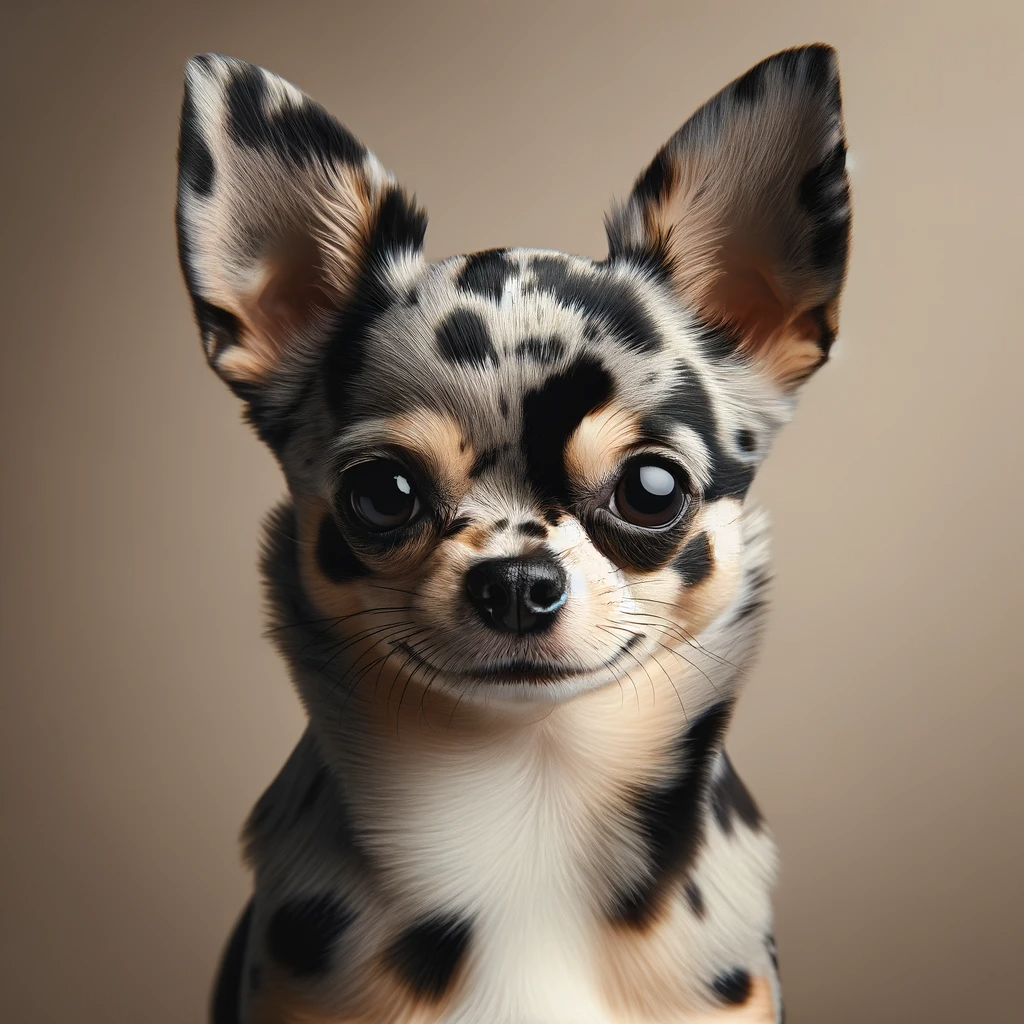
How are Merle Chihuahuas Produced?
The unique merle pattern seen in Chihuahuas is due to a specific gene, aptly named the Merle gene or M gene. This gene plays a key role in altering the pigment in the dog’s coat, leading to what’s termed as diluteness. This results in the coat having a speckled or dappled appearance, much like a beautiful patchwork quilt. Interestingly, the Merle gene is dominant. This means that for a puppy to potentially inherit this pattern, only one of its parents needs to carry this gene. Quite efficient, isn’t it?
In the delicate art of dog breeding, especially with Chihuahuas, breeders often choose a non-Merle mate for a Merle dog. This is crucial for the litter’s health. Here’s the scoop: mating two Merle Chihuahuas gives each pup a 1 in 4 chance of being a ‘double Merle’, inheriting the gene from both parents. This can sadly lead to serious health issues, including problems with sight and hearing.
Mastering the breeding of Merle Chihuahuas is like being a genetics whiz. Knowledgeable and ethical breeders don’t just throw caution to the wind. They conduct thorough genetic testing to ensure the puppies are not just visually striking but also healthy. It’s not all about the dashing Merle coat. Factors like overall health, personality, and adherence to breed standards are top of the list too.
One of the rarest Chihuahuas
The Merle Chihuahua, with its distinctive and mesmerizing coat, has become a bit of a celebrity in the dog world, creating quite a buzz among enthusiasts.
Thinking of adopting a Merle Chihuahua? Remember, they come with their own set of unique needs, especially in terms of health due to the Merle gene’s distinctive characteristics. It’s crucial to find a breeder who values the well-being of these pups as much as their adorable looks.
To put it simply, the dazzling coat of the Merle Chihuahua is a result of careful breeding, aimed at safely carrying forward the dominant Merle gene. More than just their striking appearance, these dogs are celebrated for their health and well-being, making them a beloved addition to the Chihuahua family.
2. Brindle Chihuahua
Brindle Chihuahuas, a rare and intriguing variety, stand out in the Chihuahua family with their extraordinary coat patterns. Imagine a Chihuahua masquerading as a mini tiger, with dark streaks or markings artfully splashed across a lighter base coat. This striking pattern makes them a standout, giving them an exotic flair in the Chihuahua world.
How Do You Get a Brindle Chihuahua? The Breeding Secret Revealed
The journey to breeding a Brindle Chihuahua is like solving a genetic puzzle. Here’s a peek into the breeder’s playbook for these uniquely colored pups:
The Genetic Recipe for Brindle:
Imagine the brindle pattern as a masterpiece of genetics. It’s all thanks to a specific gene that’s like a painter, deciding where to place dark streaks of melanin (the pigment) in the dog’s fur. This gene is the magic brush behind those signature brindle stripes.
To roll the dice in the genetic casino and win a Brindle Chihuahua, breeders need at least one parent who’s carrying the Brindle gene. This gene is like the popular kid in genetics class – dominant. If one parent passes this gene to their pups, it’s like hitting the genetic jackpot, with a high chance of brindle-patterned offspring.
Choosing the Perfect Parental Pair:
Breeders turn into matchmakers here, often pairing a brindle Chihuahua with a non-brindle partner. It’s like trying to bake the perfect cake – you need the right ingredients in the right amounts. This strategy not only increases the odds of brindle puppies but also keeps the gene pool diverse and interesting.
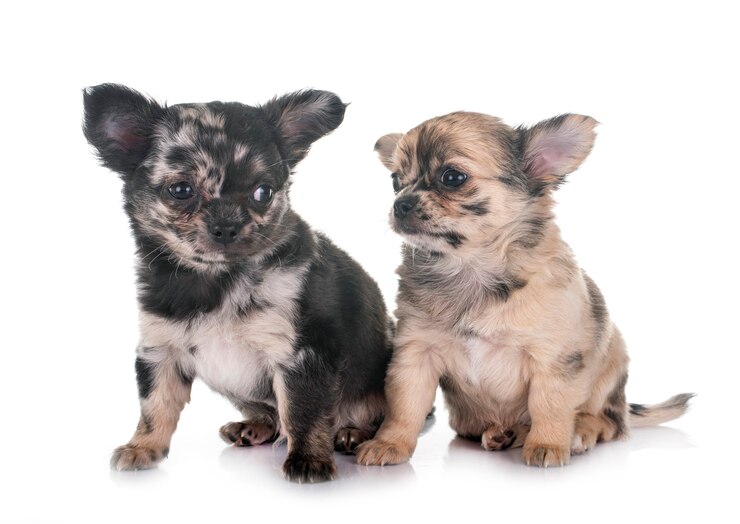
3. Blue Chihuahua
The Blue Chihuahua is an unusual and to some extent rare coloring of the usual one among the representatives of this breed. Although called blue, their fur is not the typical blue but rather has a peculiar gray tint which can sometimes be mistaken for blue under certain lighting conditions. The melanin in the hair coat of these species is black but they are given a blue color by an effacing-off factor for one of the genetic constituents strangulating this pigment causing it to become stable while changing diluting with fullerene.
How are Blue Chihuahuas Produced?
Chihuahuas are blue that is as a result of action of dilution gene known as the D-d gene. This gene influences the black pigmentation of the fur, making it lighter into a more bland color such as gray. Blue coloration can only be expressed on a Chihuahua if it inherited the dilution gene from both parents and this is making it a recessive trait.
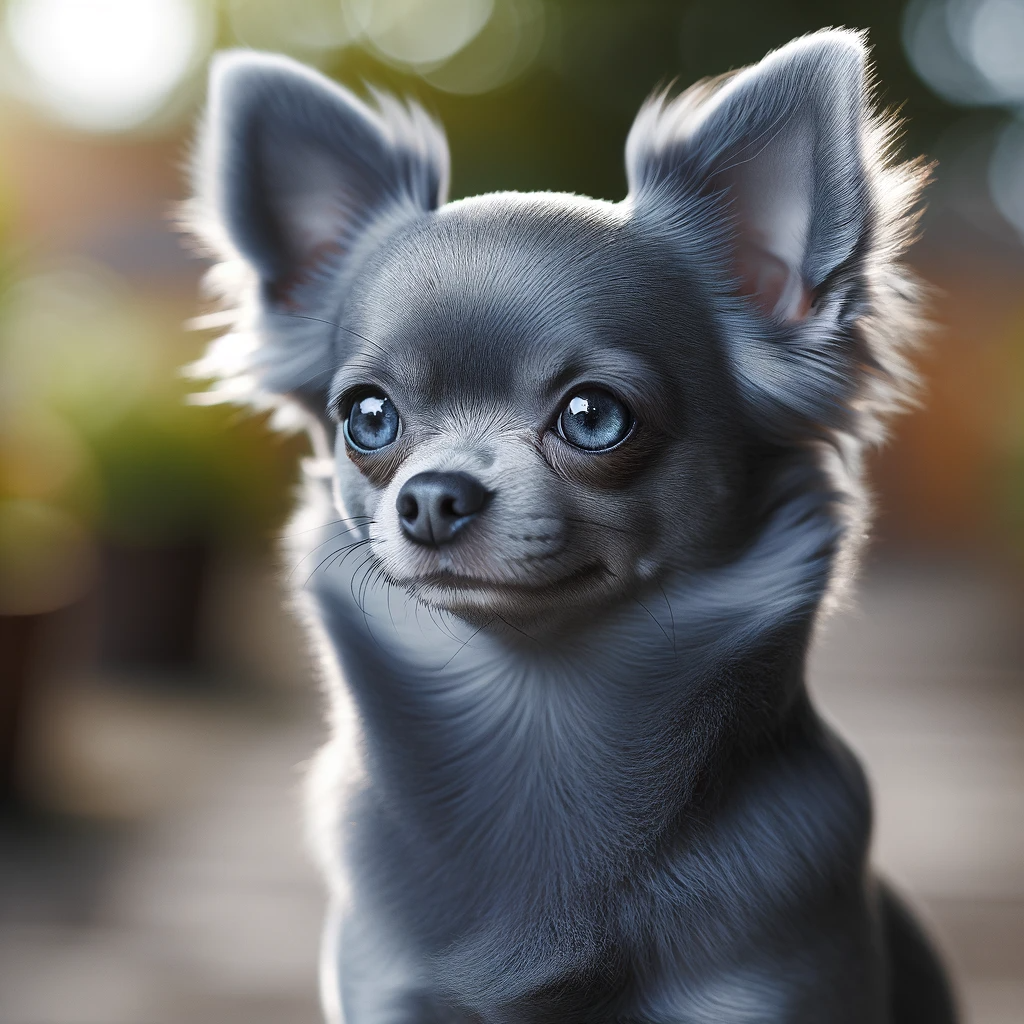
Carriers of recessive genes
If two Chihuahuas carrying this recessive gene are mated, there is a 25% chance that the resulting offspring will have the blue coat because they inherit the gene from both parents. The blue color lying in a trait, it is not always possible that all the puppies will follow the same pattern and all of them will depict this unique color as it seems to be considered mostly even when both parents hold this gene but since recessive therefore chances are less likely for them to carry forward their process.
When it comes to breeding for blue Chihuahuas, responsible breeding is essential since the dilution gene can also carry some skin and coat-related conditions like Color Dilution Alopecia. This makes health screenings and ethical breeding practices vital to maintain the current state of health as well as ensure perfect structures for puppies.
4. Chocolate Chihuahua
Chocolate Chihuahuas have dark brown coats that make them stand out from the most frequently encountered colors. This shade is from a light creamy brown to a deep dark chocolate color.
How are Chocolate Chihuahuas Produced?
The chocolate color in Chihuahuas is for more reasons a gene that changes the production of black pigment. In technical sense, the chocolate color is generated when a Chihuahua’s trait of having brown (bb) overpowers the genes coming from its parents. This gene changes black pigments in the coat to brown.
To produce a chocolate Chihuahua, both parents must carry the brown gene, even if they don’t display the chocolate coloring themselves. Breeding two carriers gives a 25% chance that a puppy will inherit the brown gene from both, displaying a chocolate coat if they have one allele.
However, it raises concerns about the responsible breeding that should be emphasized and sought to achieve like in the case where some people try to breed dogs together just for certain colors as chocolate which is an outward physical intimidation Nevertheless, The focus must be drawn back on overall health and nurturing of puppies rather than putting too much emphasis around coat color and characteristics.
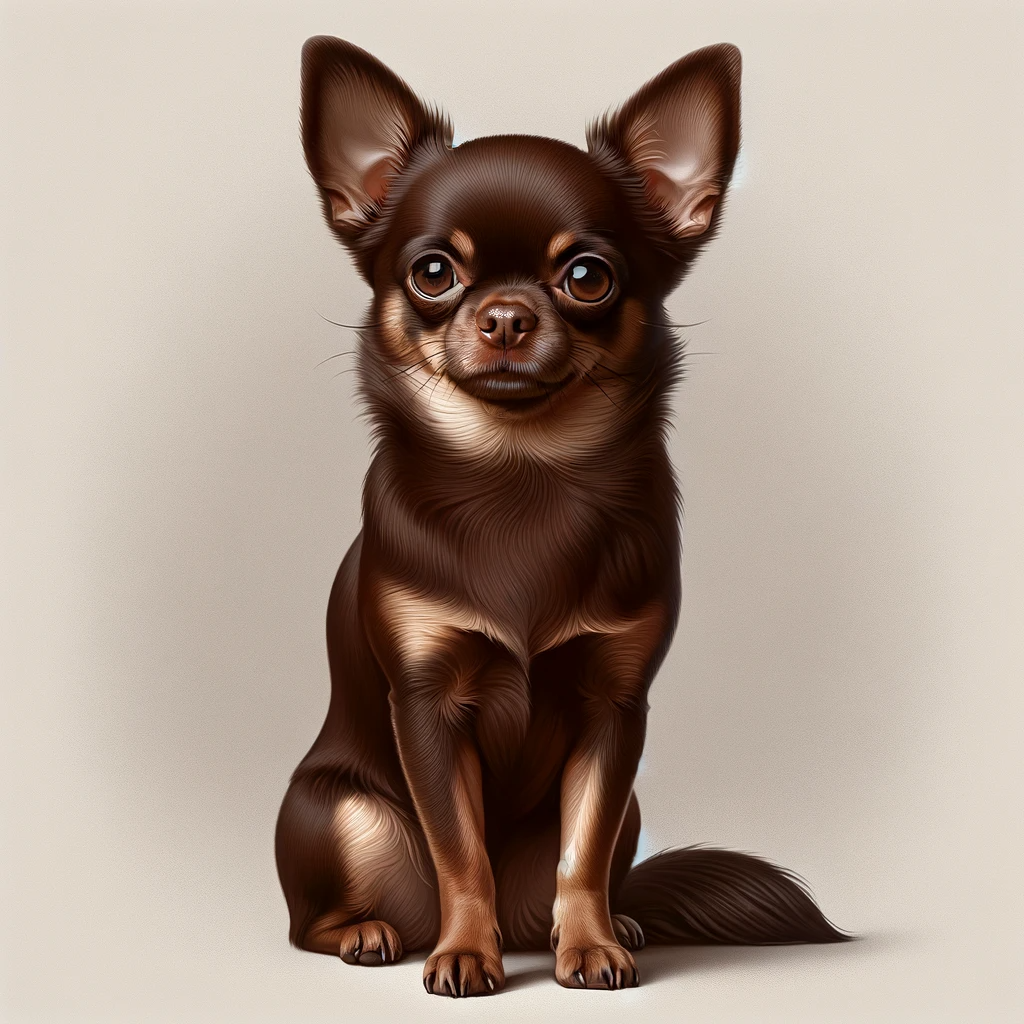
5. Lavender Chihuahua
Lavender Chihuahuas, or also called lilac ones have the totally distinct greyish silvery coloration. This shade of their colour seems to give them an celestial and unique look, making them so much in demand.
How are Lavender Chihuahuas Produced?
Kinds that contain the chocolate gene and blue dilution gene lead to lavender or lilac of Chihuahuas. Basically, it’s a lesser chocolate coat. Lavender Chihuahua is a carrier of the brown gene (bb) and blue dilution gene (dd).
Apple Plums, on the other hand, still have to laboratories one for chocolate and the other blue Apple blue labradors can occur when a dog inherits both recessive genes from his parents. So, it is necessary for both the parents to possess these particular genes although they never show this color of their coat themselves.
Like any other unusual color of a coat, ethical breeding techniques are of prime importance. The health of the puppies should be prioritized by breeders instead because being all focused into just producing a rare color can sometimes make them look away from important aspects of consideration which is their healthy conditions.
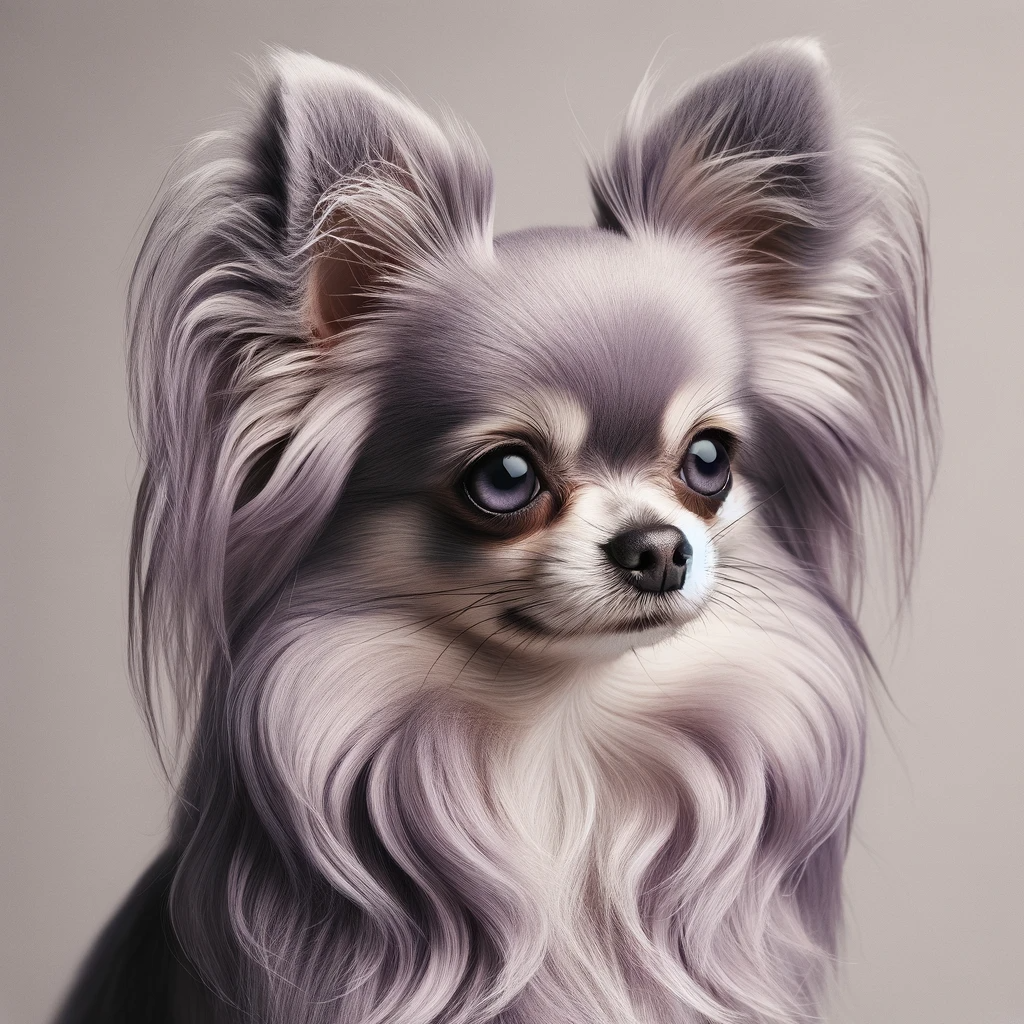
6. Pure White Chihuahua
Pure white Chihuahuas make for an exquisite variety. Their coat is completely clear of any other such color. This gives them an immaculate and stylish look. However, they’re extremely rare.

What is a White Chihuahua?
Pure white Chihuahuas are not albinos, as is often mistaken. Instead, the pigment is not present in their coat color. This can be done via several genetic ways. However, it’s the final result of being passed down two recessive genes that get rid of coloration in the coat.
A pure white Chihuahua, as a general rule, cannot be pure white unless it received this recessive trait from both its parents. It’s important to note that not all white Chihuahuas are indeed pure white. They may have very light markings or even patches of color so subtle that they cannot be detected in the first instance.
They are more sensitive than standard ones
Breeding pure white Chihuahuas requires a careful genetic approach to prevent diseases linked to pigment lack. For example, pure white Chihuahuas often have sun-sensitive skin prone to sunburn. Ethical breeding should prioritize the puppies’ health and well-being over aesthetics, ensuring they are not only beautiful but also healthy and easygoing.
READ ALSO: 6 Ways To Get Rid Of Tear Stains On Chihuahuas
What Do Rare Chihuahuas Commonly Suffer From?
Colors that are unique or rare may be linked to certain health problems. Rare Chihuahua colors often carry potential health concerns.
Skin and Coat Problems in Rare Chihuahua Colors:
Color Dilution Alopecia in Rare Chihuahua Colors:
Predominantly observed in the Blue and Lavender Chihuahuas, this condition results in hair thinning or total loss of hair. Further, it might initiate some skin-related problems like inflammation or infection due to the effect of the dilution gene on a coat.
Sensitivity to Sunlight:
Sunburn and skin cancer can be a significant concern in Pure White Chihuahuas because they have no pigment.
Eye and Ear Health Issues in Rare Chihuahua Colors:
Merle-associated Health Issues:
Ocular disorders that Merle Chihuahuas can develop include microphthalmia (small eyes), coloboma (the structure of the eye is wrong), and an increased risk of blindness. Their deafness can also be increased, especially in the case of double Merle (when both parents are Merle) breeding. That is one of the most common health issues in rare Chihuahua colors.
Genetic Disorders in Rare Chihuahua Colors:
Congenital Deafness:
This is more common in Chihuahuas with very flashy coats, and this includes some of those white-flashed dogs that are Merles of the Pure White Chihuahua.
Dental Issues:
There is a relatively high likelihood that Chihuahuas may develop dental issues and deal with teeth falling out, and this condition can play up in animals with lighter or rare coats due to deeper genetic links associated with skull and facial bone structure.
Neurological Conditions in Rare Chihuahua Colors:
Hydrocephalus:
Breeding Chihuahuas for rarer colors without considering future generations’ health can increase the risk of hydrocephalus. This condition, an accumulation of fluid in the brain, leads to neurological symptoms and can affect Chihuahuas regardless of their color.
Heart Problems in Rare Chihuahua Colors:
However, some lines of Chihuahuas may be prone to genetic defects such as patent ductus arteriosus (PDA) or mitral valve disease, but not related to its color.
Hypoglycemia in Rare Chihuahua Colors:
Smaller breeds, such as Spaniels and Chihuahuas, often experience low blood sugar levels. Factors like stress, malnutrition, or inadequate body fat reserves can exacerbate this condition, particularly in very young or small-sized animals.
What Is The Price of Rare Chihuahua Colors?
Rare-colored Chihuahuas are often higher in price. Their price range between $1,500 to $3,000. If you’re searching to buy a rare Chihuahua in your country, please, make sure you discover everything about the breeder. How much puppies he ”produces” a year? Ask to see the puppy’s parents and make sure he/she shows you their health certificates.
READ ALSO: Do Chihuahuas Bark A Lot? How To Make Them Stop?
Popular Rare Chihuahua Colors: Wrapping Up
Rare-colored Chihuahuas, highly sought after for their unique hues, have gained popularity and value. If you’re considering adopting one, ensure thorough research and contact reputable breeders or adoption centers.


4 thoughts on “Top 6 Rare Chihuahua Colors: Comprehensive Guide”